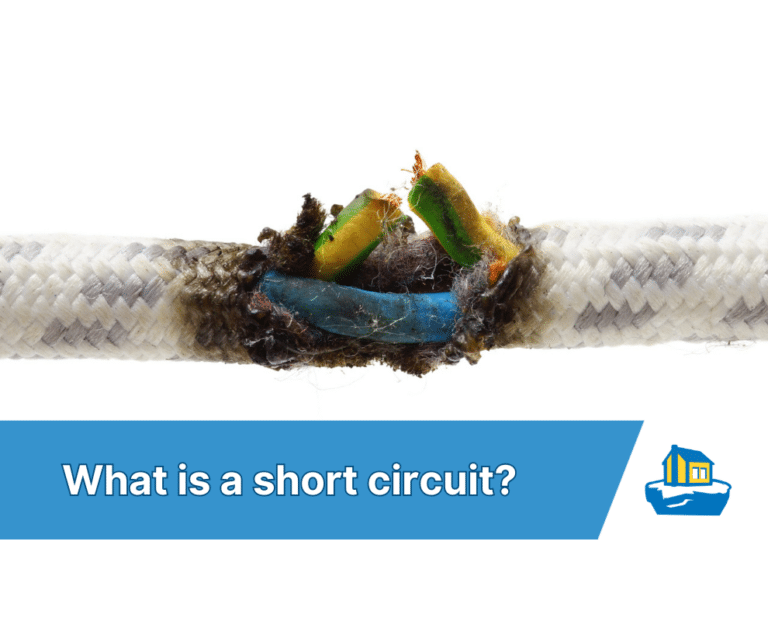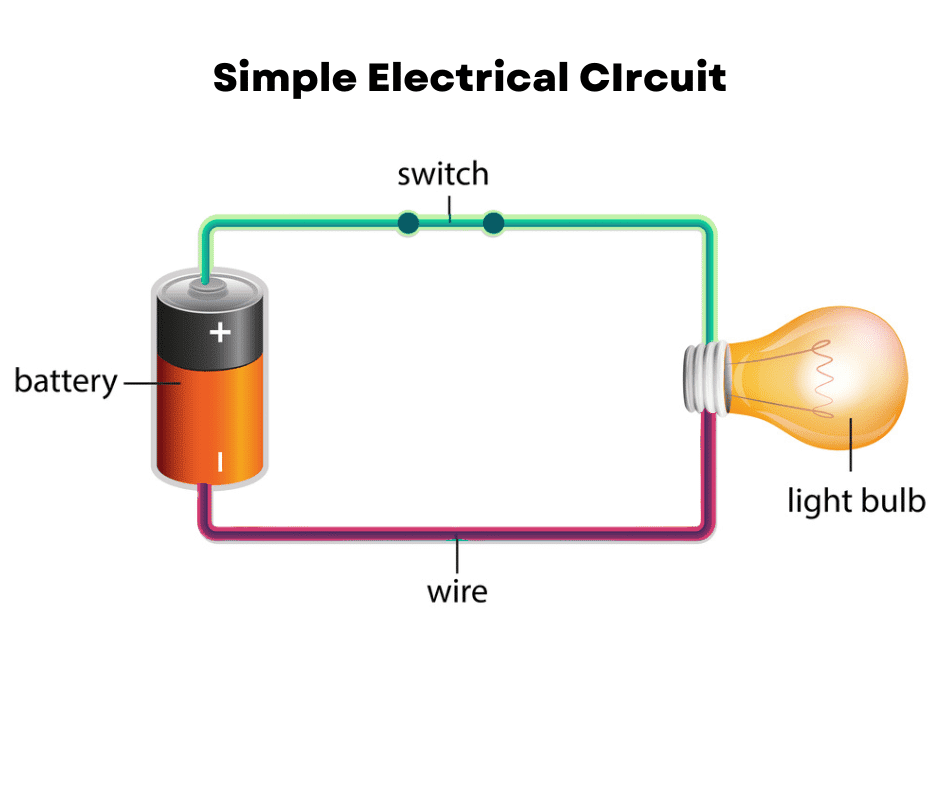4.9 1890+ Google Reviews

The textbook definition of a short circuit is an unintended path for flowing electricity with little to no resistance. It occurs inside an electrical circuit and results in excessive electricity in the circuit.
If that didn’t make sense, let’s start with the basics.
A circuit is a closed path or loop for the flow of electricity (current). A simple closed circuit (loop) includes a power source such as a battery, the conductor (wire), and a load such as a light bulb.
In a typical home electrical system, a circuit starts at the circuit breaker in the service panel. In other words, the circuit breaker is the power source.
Next, a hot wire (usually black) is the intended path of electricity to a load, such as a plugged-in toaster. Finally, a neutral wire (typically white) is the return path of electricity back to the power source.
Of course, a typical circuit in a home has many loads, but the principle is the same.

A short circuit is when a conductor (anything that conducts electricity ) bridges the circuit across the power source. This low resistance connection creates a new path of electrical current flow. However, the new path is a shorter path and does not cross the load. The conductor can be a metal object such as a piece of wire or a human body.
Most electricity will take the path of least resistance, creating excessive current flow through the wires.
Common causes of short circuits are damaged wires or power cords due to rodents or nails, faulty appliance wiring, and loose wire connections.

A short circuit has little to no resistance resulting in high current through the conductor. The result of the high currents through the conductor is high temperatures. These temperatures can burn skin or melt the insulation off electrical wires causing electrical fires igniting any nearby flammable materials.
In addition, there is the risk of electrical shock to anyone using the circuit during the shorting event and the risk of damage to anything connected to the electrical circuit. Ultimately, a this condition can cause considerable damage or injury.
However, the circuit breaker will trip in a properly installed and working home electrical system during a short. Specifically, the increased current and temperature will trip the breaker, stopping the flow of electricity through the circuit.
A ground fault is an unintended flow of electricity from the live wire back to ground. A typical example is someone touching a live wire while also touching the ground. The result is electric shock. For example, this could happen if a loose live wire touched an appliance cabinet.
In addition to the hot and neutral wires, modern home wiring has ground wires. The ground wire connects the device to the ground through a grounding electrode system at the service panel. In addition, the ground wire bonds all non-current carrying parts of an electrical circuit back to the main neutral in the service panel.
In modern home wiring, ground wires and ground fault circuit interrupters significantly reduce the risk of a ground fault shock. For example, the breaker will trip if a loose live wire comes in contact with an appliance cabinet. This is because the ground wire bonds the cabinet back to the main neutral in the service panel.
As a result, the electricity will have no resistance between the live wire, the cabinet, the ground wire, and the main neutral. This lack of resistance leads to too much current for the breaker to handle, and it trips.
A ground wire will only protect people from shocks if the live wire touches a grounded circuit component. In other words, a ground wire will not protect you if you become the conductor between the live wire and the ground. A typical example is plugging something in with water around the outlet.
However, for those situations, a GFCI device will protect people. GFCI outlets work by detecting tiny current imbalances between the ungrounded and grounded (aka the “hot” and “neutral”) conductors. An imbalance as low as 5 mA (0.005 amps) will shut off power to everything downstream of the device.
Short circuits are caused by faulty wiring or some type of wiring problem. Simply put, the hot and neutral wires get connected at an unintended location changing the electrical flow. The new flow of electricity has no electrical resistance creating excessive currents and temperatures.
In contrast, a ground fault is when there is an unintended flow of electricity from the hot wire to the ground.